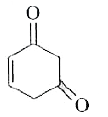Tissue level organisation is exhibited by
sponges
coelenterates
both 1 & 2
triploblastic animals
The correct Answer is:B
To determine which organisms exhibit tissue-level organization, we can analyze the different levels of biological organization in various animal phyla. Here’s a step-by-step breakdown of the solution:
1. Understanding Levels of Organization:
- Organisms can be classified based on their level of biological organization, which includes cellular, tissue, organ, and organ system levels.
2. Identifying Phyla:
- The question presents four options: sponges (phylum Porifera), cnidarians (phylum Cnidaria), triploblastic animals, and a combination of the first two.
3. Analyzing Sponges (Phylum Porifera):
- Sponges are the simplest animals and exhibit cellular level organization. They do not have true tissues; instead, their bodies are made up of loosely organized cells.
4. Analyzing Cnidarians (Phylum Cnidaria):
- Cnidarians, which include jellyfish, corals, and sea anemones, exhibit tissue-level organization. They have specialized cells that form tissues, allowing for more complex functions than sponges.
5. Analyzing Triploblastic Animals:
- Triploblastic animals possess three germ layers: ectoderm, mesoderm, and endoderm. These layers develop into organs, indicating that they have organ-level organization rather than just tissue-level organization.
6. Conclusion:
- Since sponges do not exhibit tissue-level organization and triploblastic animals exhibit organ-level organization, the only group that fits the criteria of exhibiting tissue-level organization is cnidarians.
Final Answer:
The correct answer is Cnidarians (Phylum Cnidaria).
---
- Organisms can be classified based on their level of biological organization, which includes cellular, tissue, organ, and organ system levels.
- The question presents four options: sponges (phylum Porifera), cnidarians (phylum Cnidaria), triploblastic animals, and a combination of the first two.
- Sponges are the simplest animals and exhibit cellular level organization. They do not have true tissues; instead, their bodies are made up of loosely organized cells.
- Cnidarians, which include jellyfish, corals, and sea anemones, exhibit tissue-level organization. They have specialized cells that form tissues, allowing for more complex functions than sponges.
- Triploblastic animals possess three germ layers: ectoderm, mesoderm, and endoderm. These layers develop into organs, indicating that they have organ-level organization rather than just tissue-level organization.
- Since sponges do not exhibit tissue-level organization and triploblastic animals exhibit organ-level organization, the only group that fits the criteria of exhibiting tissue-level organization is cnidarians.
The correct answer is Cnidarians (Phylum Cnidaria).
Topper's Solved these Questions
- ANIMAL KINGDOM BOOK - AAKASH SERIESCHAPTER - ANIMAL KINGDOM EXERCISE - EXERCISE I (PLATYHELMINTHES)
45 Videos
- ANIMAL KINGDOM BOOK - AAKASH SERIESCHAPTER - ANIMAL KINGDOM EXERCISE - EXERCISE I (NONCHORDATES)
7 Videos
- BIODIVERSITY AND CONSERVATIONBOOK - AAKASH SERIESCHAPTER - BIODIVERSITY AND CONSERVATIONEXERCISE - EXERCISE-II India - A major Source of Biodiversity and its Preservation
2 Videos
Similar Questions
Knowledge Check
Tautomerism is exhibited by :
A B
B C
C D
D
Diapause is exhibited by
View SolutionWhich of the following are correct ?
(i) Sponges : Cellular level of organisation
(ii) Cnidaria : Tissue level of organisation
(iii) Platyheminthes : Organ level of organisation
(iv) Annelids, Arthropods, Molluscs, Echinoderms and Chordates : Organ system level of organisation
View SolutionOrgan system level of organisation is shown by
View SolutionParamagnetism is exhibited by :
View SolutionOrgan system level of organisation is observed in
View SolutionWhich of the following are correct ?
(i) Sponges :Cellular level of organization
(ii) Cnidaria : Tissue level of organization
(iii) Platyhelminthes :Organ level of organization
(iv) Annelids :Organ system level of organization .
View SolutionTautomerism is exhibited by :
View Solution
